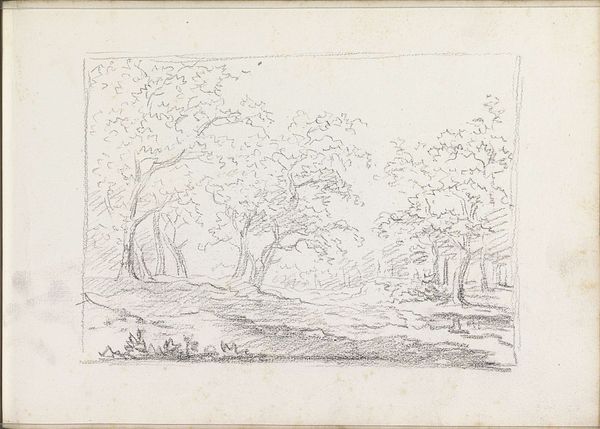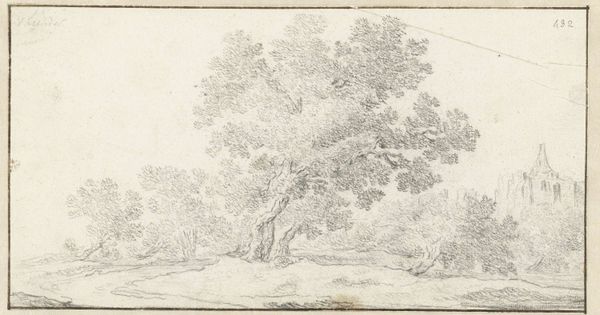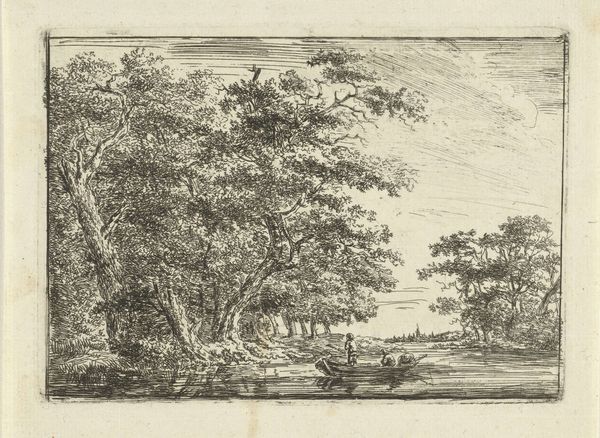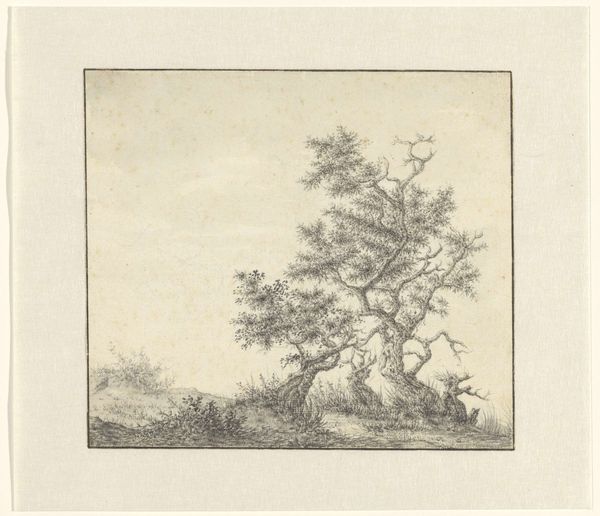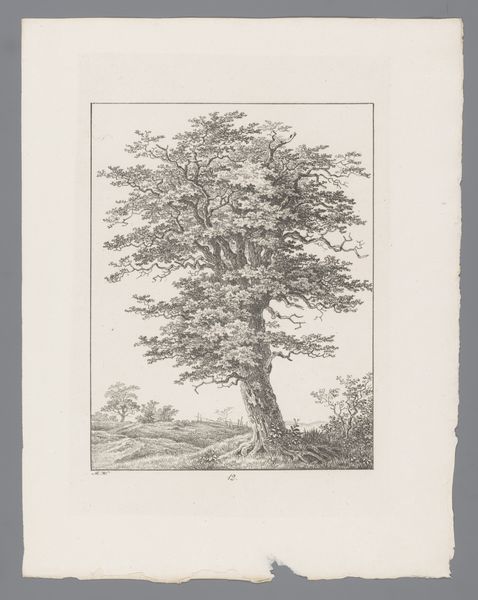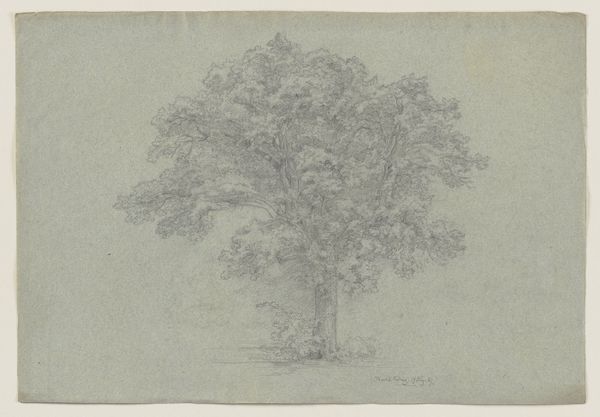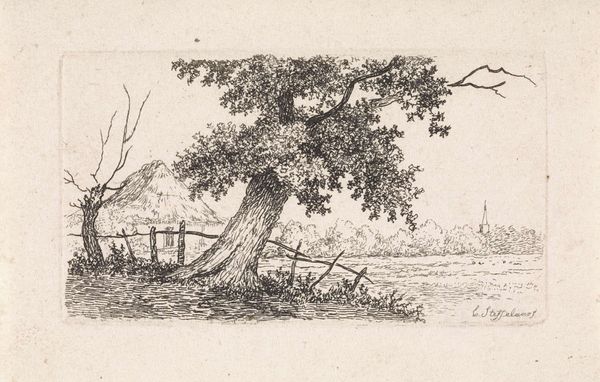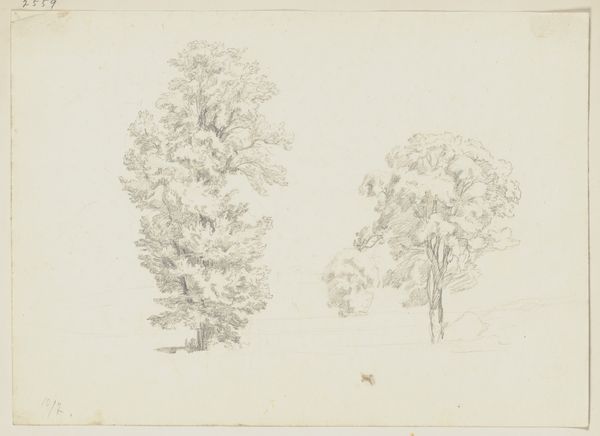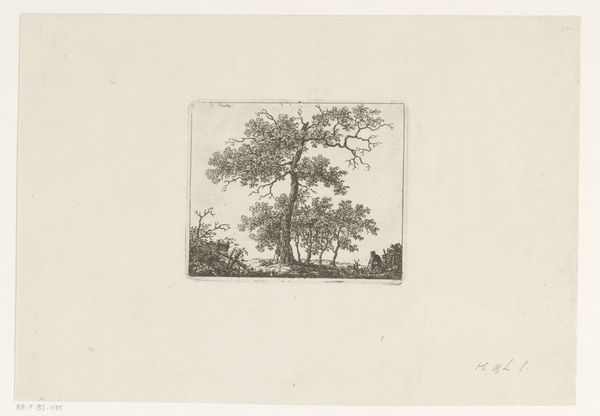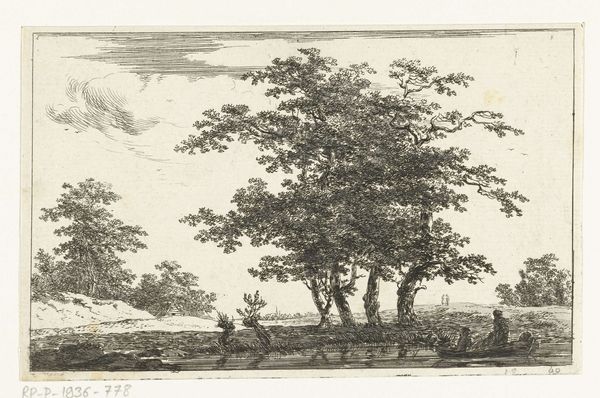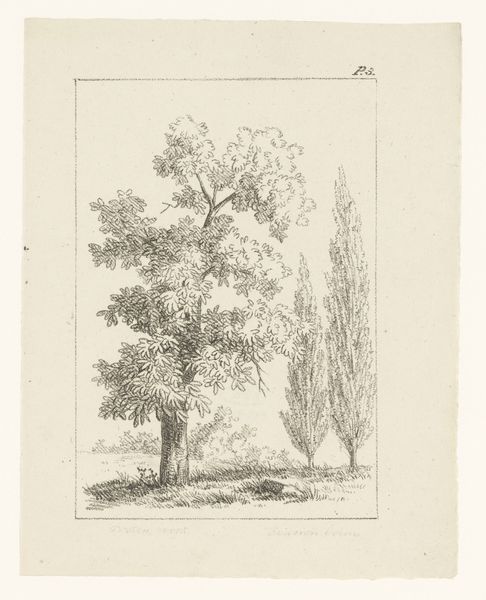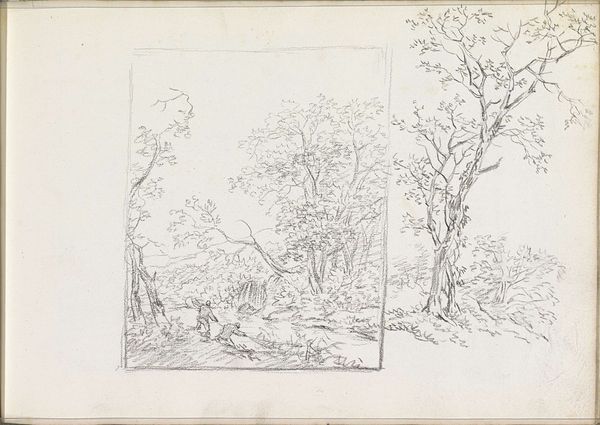
Albumblad met twee voorstellingen van twee eikenbomen: links het ontwerp, rechts de uitvoering 1816
0:00
0:00
drawing, paper, ink, pencil
#
tree
#
drawing
#
amateur sketch
#
light pencil work
#
pen sketch
#
pencil sketch
#
landscape
#
classical-realism
#
paper
#
personal sketchbook
#
ink
#
sketchwork
#
ink drawing experimentation
#
pen-ink sketch
#
pencil
#
line
#
sketchbook drawing
#
realism
#
initial sketch
Dimensions: height 317 mm, width 460 mm, height 205 mm, width 170 mm
Copyright: Rijks Museum: Open Domain
Curator: Here we have "Albumblad met twee voorstellingen van twee eikenbomen: links het ontwerp, rechts de uitvoering", created by Max Josef Wagenbauer in 1816. Editor: My initial impression is one of quiet diligence. The delicate pencil work suggests a very dedicated process. It's fascinating to see this laid out like a before-and-after study. Curator: Precisely! Wagenbauer's work here really exemplifies the growing interest in landscape and nature studies in the early 19th century. There was increasing scientific observation impacting art, creating more accurate depictions. Editor: And you see that especially on the right, with the final oak—it's incredible how he's rendered all the details. What I'm curious about is his choice of materials. Why ink and pencil? Was this for reproduction? Curator: Potentially, yes. The drawing could have served as a model for prints, which were becoming increasingly popular and accessible. This allowed wider circulation of natural studies, reflecting both artistic and educational aspirations of the time. Editor: So there’s a sense that this isn't just an exercise in representing an oak tree but a product meant for wider consumption? What kind of cultural impact was this intended to have? Curator: It could have shaped understandings of nature. Such detailed depictions contributed to broader scientific and aesthetic understandings. It’s also about establishing and reflecting national identity through the imagery of landscape. Editor: This focus on reproducibility and democratization somewhat tempers that, which brings an entirely new lens to how we examine "high" art practices and their ties to broader modes of cultural expression and scientific study. Curator: Indeed. And I see it as helping us re-evaluate our understanding of the historical roles of artwork beyond the established cultural and political narratives of the time. Editor: It's fascinating how these modest sketches reveal the interwoven dynamics between nature, artistic craftsmanship, and budding societal changes. Curator: Absolutely. It makes us consider not just the finished product, but the historical forces surrounding its creation and dissemination.
Comments
No comments
Be the first to comment and join the conversation on the ultimate creative platform.
